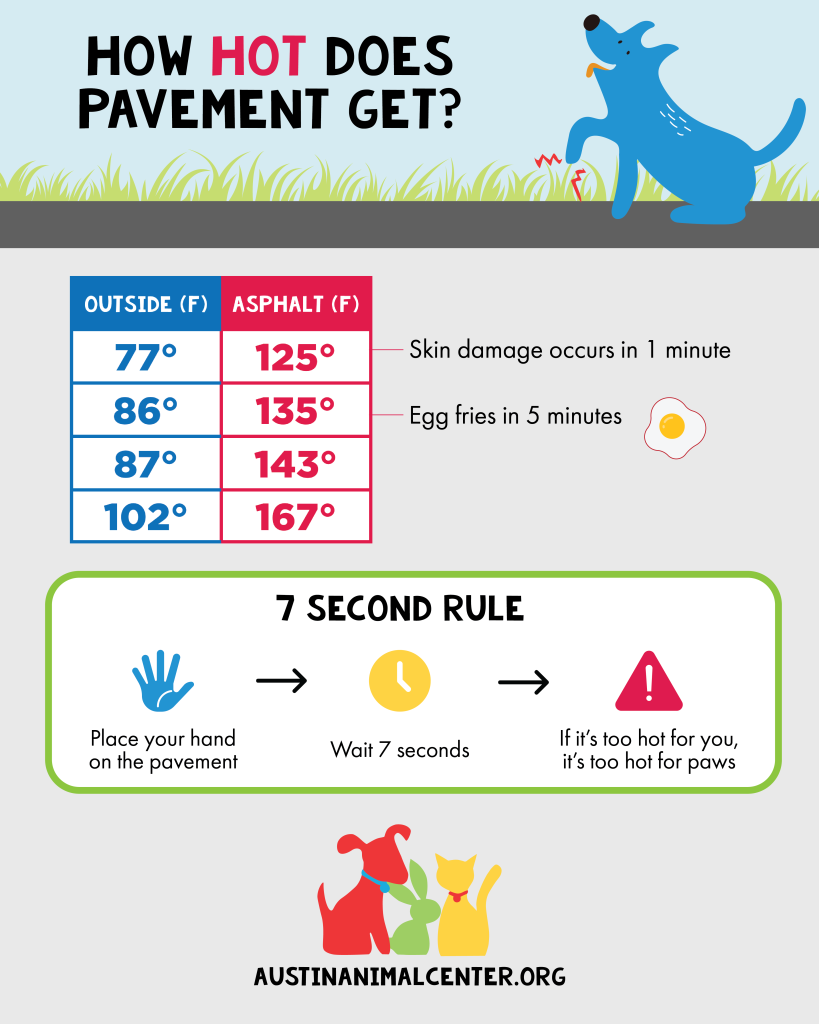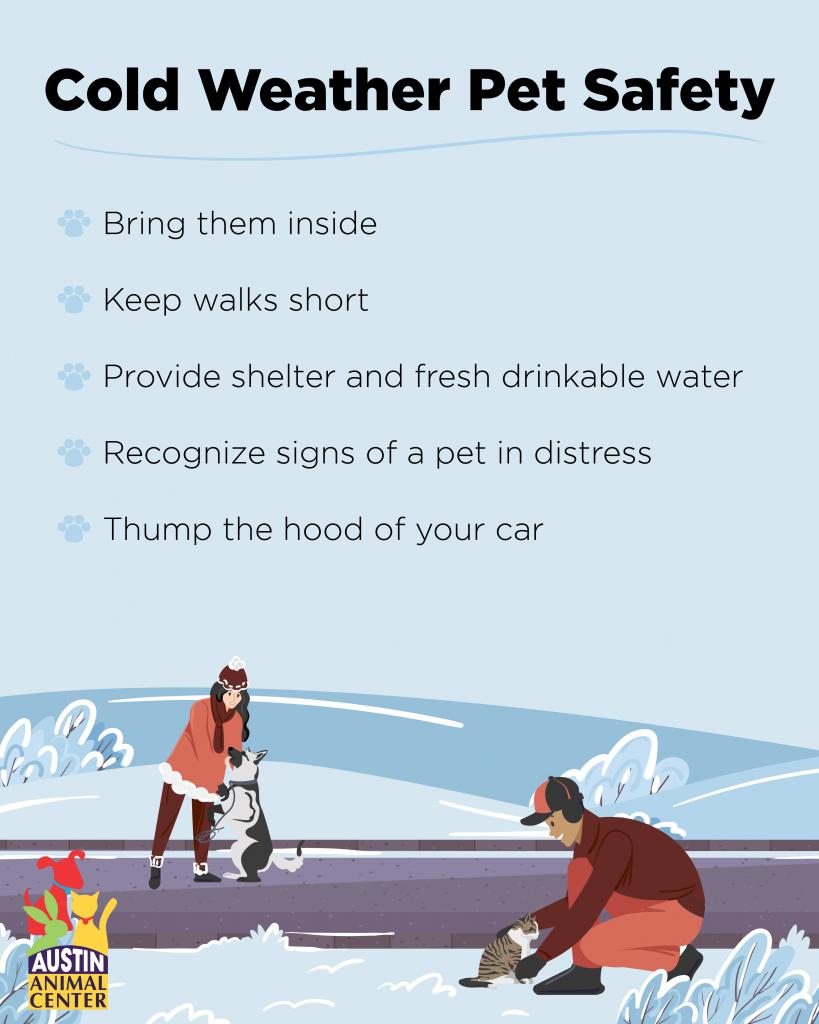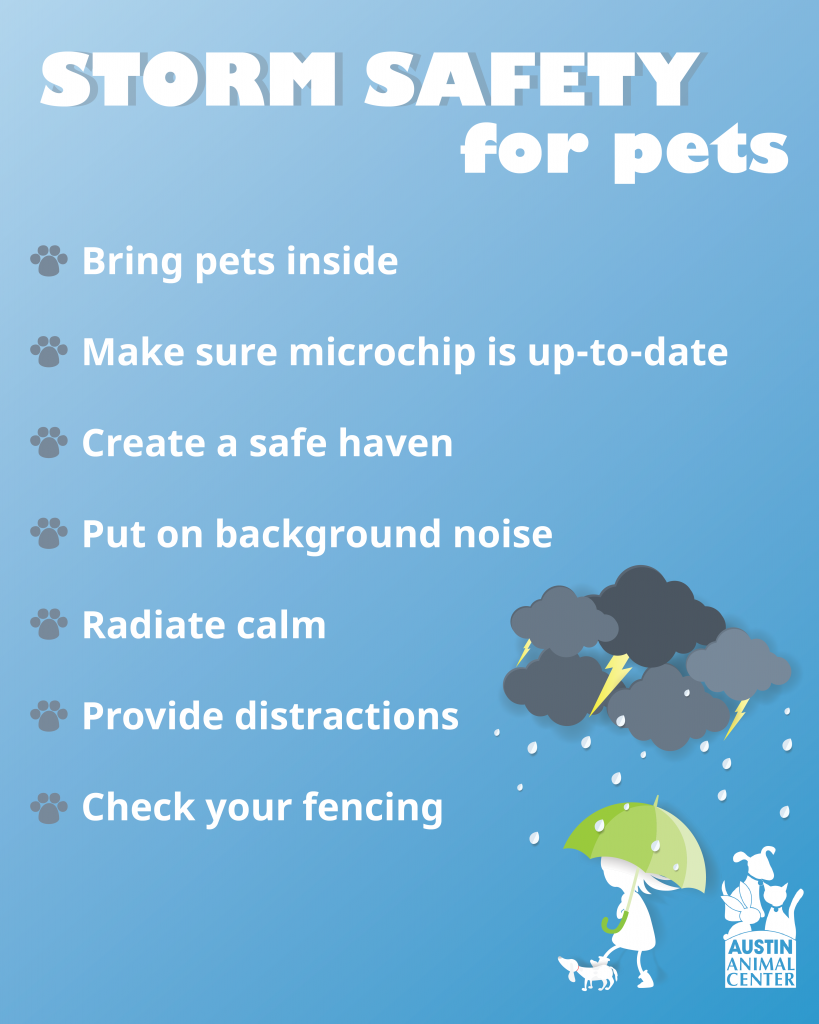Heat Advisory Safety Tips
It's hot in Texas, y'all! Follow these tips to keep your pets nice and cool:
- Any time your pet is outside, make sure they have protection from heat and sun, and plenty of fresh, cold water. In heat waves, add ice to water when possible.
- Limit exercise on hot days and stay off of pavement - it cn quickly burn your dog's paw pads.
- Know the symptoms of overheating: extreme panting or difficulty breathing, increased heart rate, excessive drooling, glazed eyes, deep red or purple tongue, dizziness or lack of coordination, vomiting
- Never leave your pet in the car, even with the windows down.
Animals are at particular risk for heat stroke if they are very old, very young, overweight, or have heart or respiratory disease. Some breeds (like boxers, pugs, shih tzus, French bulldogs, and other dogs and cats with short muzzles) will have a much harder time breathing in extreme heat.

Cold Weather Safety Tips
These tips can help make sure your pet is safe during winter weather:
- Bring them inside. Even though they have fur, pets are still at risk of hypothermia in freezing weather. Longer furred breeds like huskies and Great Pyrenees may have a higher tolerance for cold weather but no pet should be left outside for long periods during freezing temperatures.
- Keep walks short. Shorter-haired dogs are going to get cold faster, and elderly dogs may have problems walking on the ice. Check their paws to make sure balls of ice haven’t formed between their toes.
- Provide shelter. If you’re unable to bring your pet inside, make sure they have adequate shelter. The shelter should be up off the ground if possible and the door should face away from the wind. Provide thick, dry bedding and replace it regularly if it gets wet. Do not use space heaters or heat lamps due to fire risk, and don’t use heating pads as they can burn your pet’s skin. Remember that the Safe Outdoor Dogs Act passed recently which requires outdoor dogs to have access to fresh drinking water (make sure it’s not frozen by changing it out regularly) as well as shelter that they can stand up in and turn around comfortably.
- Recognize a pet in distress. Signs of hypothermia in pets include shivering, lethargy, weakness, and shallow breathing. Frostbite can also be a risk for ears and tails; signs of frostbite include red, swollen areas or pale, white areas. Consult your veterinarian if you are concerned your pet may be hypothermic or have frostbite.
- Hit the hood of your car before starting the engine. Sometimes cats take cover in engine compartments and can get seriously injured and/or transported away from their home. By hitting the hood of your car, it gives them a chance to get out safely.

Helping Outdoor Cats
Want to help the community cats in the neighborhood? Consider making an outdoor shelter! You can use things commonly found around the house, like a storage tub or styrofoam container.
Thunderstorms & Wind Advisories
Bad weather can be stressful for your pets. Follow these tips to keep everyone safe!
- Bring pets inside whenever possible. If outdoors, ensure that they have waterproof housing that will keep both them and the ground they're on dry.
- Make sure your microchip information is up-to-date. Register a chip for free through 24pet.
- Create a safe haven for your pet - an inner room with their bed or blanket plus background noise (radio, TV) can help their anxiety.
- Radiate calm and provide distractions like Kongs or long-lasting chews.
- Check your fencing! Strong winds can blow gates open or even blow fences down. Make sure your yard is secure before letting your dog out to go potty.
- If your pet does get loose, text 'LostATX' to (844) 764-2125 to get immediate tips on what to do.

Safe Outdoor Dogs Act
The Safe Outdoor Dogs Act is a Texas law that passed in January 2022. What does this mean for pet owners?
- Tethering dogs within the city limits of Austin is prohibited by city ordinance unless the owner is physically present with the dog.
- Dogs tethered in Travis County (outside Austin city limits) cannot be on a chain and the tether must be attached to a properly fitted collar or harness.
- Adequate shelter is defined as something that protects the dog from inclement weather and allows them room to sit, stand, and turn normally.
- A tethered dog must be able to get away from standing water and have access to drinkable water as well as shade from direct sunlight.
If you need a lightweight tether or a doghouse, we can help! Call 311 to be connected to an Animal Protection Officer.
Concerns regarding compliance with this law can be reported to 311 and will be investigated by our Animal Protection Officers.

